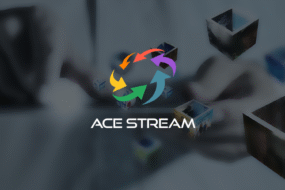This post is co-authored by Salil Sinai Cuncoliencar, Staff Software Engineer at Intuit and Manoj Kale and Upendra V at AWS.
Through customizing the Amazon AppStream 2.0 experience, Intuit simplifies their customers end user experience and migration from QuickBooks Desktop to QuickBooks Online. In this blog post we share how Intuit successfully migrated legacy Intuit QuickBooks Desktop users to QuickBooks Online.
A traditional migration experience requires users to complete a set of prerequisites, such as:
- Update QuickBooks Desktop to the latest version
- Upgrade .Net and Windows OS on physical desktops
- Customers need to update their system with .NET version 4.5+ and Windows 10+ to run QuickBooks Desktop.
- Switch to a supported browser (Chrome, Firefox, Safari, Mozilla) if user is on an unsupported version.
To provide a simpler experience, Intuit built a standalone migration tool. The tool provides: a) one-click access to migration and b) a browser-based experience with no need to install or update software manually. This tool provides a seamless data upload. We will describe the architecture and advantages of this migration tool.
Many applications in the IT ecosystem are still delivered to end users as desktop applications. These applications serve typical use cases, such as offline access, fast locally-stored data access, and so on. It is a challenge to keep applications up to date, to secure locally-stored data, and to control application access. As a part of digital transformation, enterprise companies are migrating legacy desktop-based applications to cloud-hosted applications. This ensures users are using the most current software versions with optimal security, scalability and ease of management.
Intuit is the global financial technology platform that powers prosperity for the people and communities it serves. With 100 million customers worldwide using TurboTax, Credit Karma, QuickBooks, and Mailchimp, Intuit believes that everyone should have the opportunity to prosper, so the company never stops working to find new, innovative ways to make that possible.
Intuit QuickBooks is a leader in small business fintech, helping more than 7 million customers around the world save time by simplifying complex business operations and taking the guesswork out of complicated compliance matters, all in service to the company’s mission to power prosperity. From starting up to scaling up, QuickBooks has the connected tools, expert services, and insights businesses need at every stage of growth.
For QuickBooks Desktop customers in the U.S., and Canada, QuickBooks Desktop has been a primary product for maintaining their books and accounting data.
Intuit’s vision is to accelerate their digital transformation journey from QuickBooks Desktop customers to QuickBooks Online, by offering a frictionless experience across discovery, data migration and Online setup. QuickBooks Online is a subscription-based product that gives customers the freedom to work on the go. Customers can access and sync data across devices, including computer, tablet and smartphone. The data is securely backed up and customers have instant access to the latest product and feature updates.
Solution Architecture
The main drivers in architecting this migration tool are the ability to kick-off migration with one click and to handle large numbers of concurrent users. The architecture diagram below illustrates an AppStream 2.0 fleet in an Amazon VPC environment with core services AWS IAM and Amazon EC2 AMI.
Figure: 1 Architecture of AppStream 2.0 based QuickBooks Desktop Migration Tool

A QuickBooks Desktop user undergoes 3 major phases during migration:
- Discovery
- Connection
- Migration
1) Discovery
Intuit QuickBooks help article is a starting point for the migration.
2) Connection
An Intuit QuickBooks Desktop user can click on “Get Started” to begin a migration.
Figure: 2 Instructions to start migration with “Get Started” Link

- Once Desktop user clicks on “Get started” link, the user is redirected to a link to enter Intuit QuickBooks Online credentials. The authentication process completes using a SAML 2.0 Identity Provider (IdP). To learn about AppStream 2.0 integration with SAML 2.0 , you may refer Administrative guide.
- Once authentication is successful, the browser-based AppStream 2.0 session is initiated. This AppStream 2.0 session uses an always-on fleet in a secure Amazon VPC.
3) Migration
- In the browser-based session, a QuickBooks Desktop user can upload their desktop data.
- Once the data is successfully uploaded, the AppStream 2.0 session ends.
- The migration status is communicated to the user over email. Upon successful migration, desktop users can start using the QuickBooks Online application.
Figure: 3 Confirmation of Migration completion

To learn more about the step-by-step migration process please refer to this help article: Move your books to QuickBooks Online with an online tool.
Key highlights of AppStream 2.0 helping to overcome migration challenges
- Browser-based experience – The user initiates a non-persistent session on the browser without requiring them to install a software agent on their desktop.
- Secure Session – AppStream 2.0 session is guarded by a SAML federation between Intuit Services and AWS by a SAML 2.0 Identity Provider (IdP). The session is time bound, thus making it secure.
- Scale at ease – AppStream 2.0 scaling policy is used to support a large number of concurrent users. Please refer to AWS Compute Blog to learn more about scaling desktop application streams with Amazon AppStream-2.0.
- Instant Streaming – With AppStream 2.0, always-on fleets streaming instances run at all times, and are provisioned before a user initiates the process to stream. This ensures the streaming session is available instantly.
- Disaster Recovery – In addition to multi-AZ fleet availability within a region, AppStream 2.0 fleets in multiple regions help in achieving improved resiliency. For example, the us-west-2 region can be a primary region for streaming sessions. During rare cases when streaming is unavailable, sessions can be run from the us-east-2 region. Please refer Disaster Recovery in Amazon AppStream 2.0 for more details.
Conclusion
Intuit has successfully taken advantage of AppStream 2.0 to build a standalone migration tool for its QuickBooks Desktop users. This tool ensures the migration journey is seamless, simple and fast, enabling a large number of users to start their QuickBooks Online journey for enhanced experiences. This blog demonstrates how customers can accelerate digital transformation journey for their legacy and desktop-based applications using AppStream 2.0. To know more about Amazon End User Computing use-cases and best practices, visit AWS documentation. If you have comments about this blog post, please submit them in the ‘Comments’ section below.
 | Manoj Kale is a Sr. Technical Account Manager at Amazon Web Services. As a Technical Account Manager, he works with Global Enterprise customers and help them build, scalable, modern and cost-effective solutions. |
 | Upendra V is a Sr. Solutions Architect at Amazon Web Services. As an Enterprise Solutions Architect, he is responsible for advising Global Enterprise customers on cloud adoption and helping customers optimize cloud workloads. |
Grazie del tuo interesse, se desideri rimanere aggiornato iscriviti alla nostra Newsletter !













